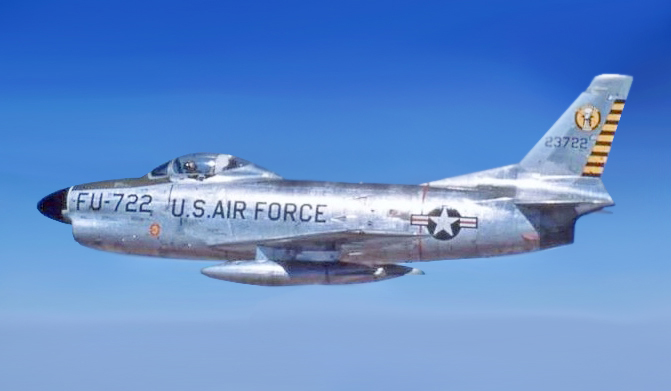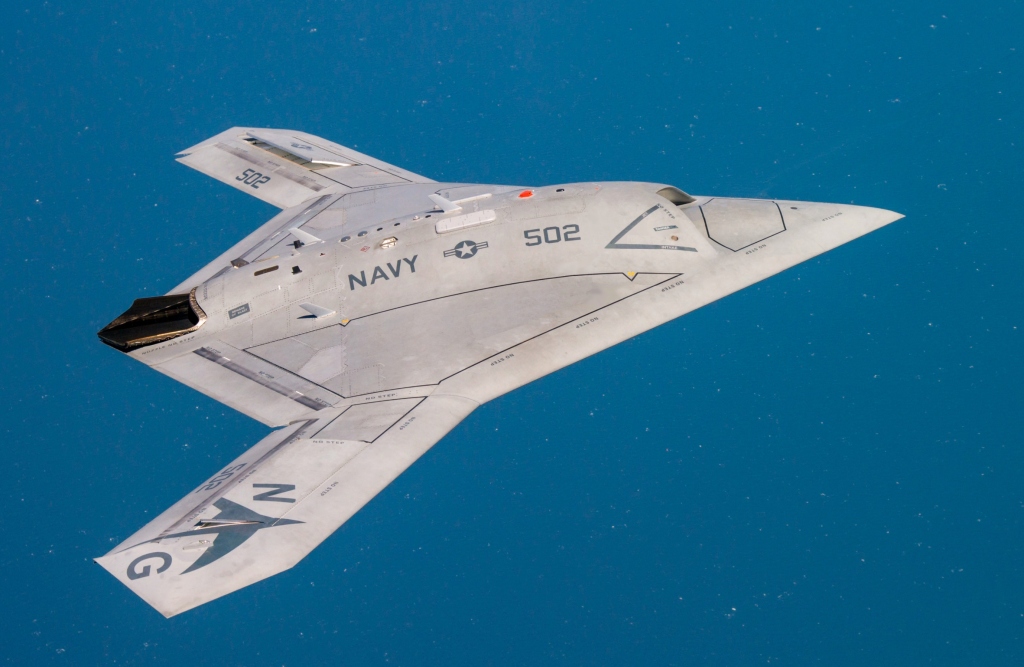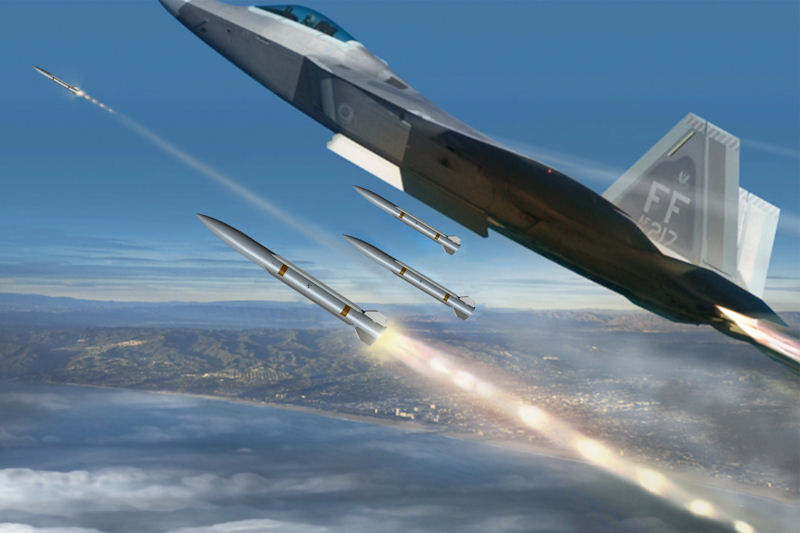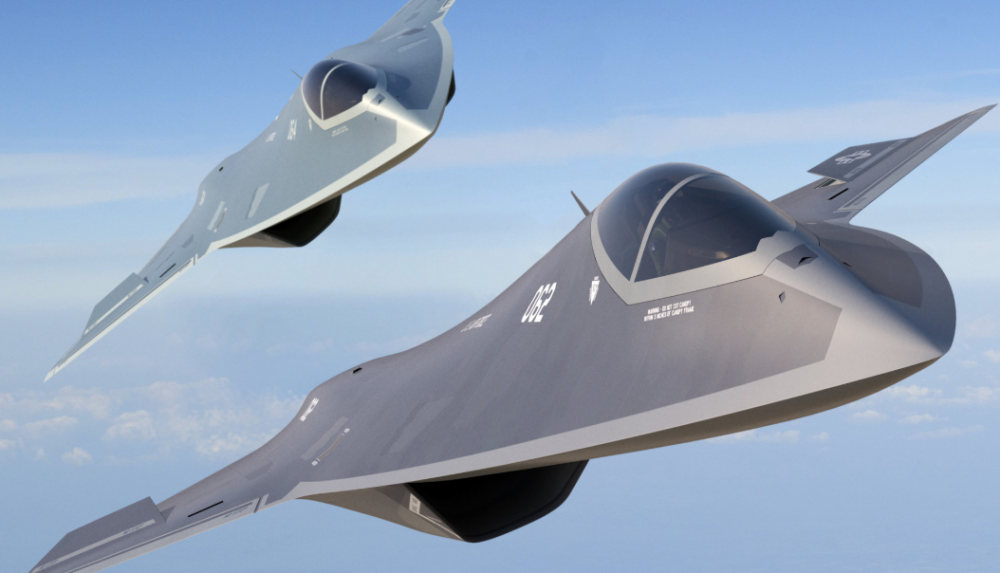The Galwan Valley skirmish between two major powers China and India once again brought war clouds on the horizon. The two airforces moved fighter jets to airbases near the place of action. Also, there was a flurry of articles on the physical combat readiness state of the opposing air forces. Just last year, the Indian Air Force’s (IAF) Balakot strikes and the air combat that followed in response to the Pakistan Air Force (PAF) riposte on 27th March 2019, rekindled interest in fighter aircraft technologies and air combat capabilities. Combat aviation has not only become the most preferred means of prosecution of war but has seen the fastest growth of technology. Fighter aircraft are designed for air-to-air combat against other aircraft, and to bomb or attack surface targets. World War II featured fighter combat on a larger scale than any other conflict to date. During the invasion of Poland and France Luftwaffe’s air superiority played a major role in German victories. In the Battle of Britain use of radars resulted in an advantage RAF. During WW II strategic bombing was the main attack mission. The concept of aerial fighter escorts to bomber/strike missions thus evolved. Light fighters proved very successful in WW II. Their special features were agility (speed, maneuverability), accurate weapon delivery, capability to operate in all weathers and at night, and being secure from enemy air and surface threat. As technology grew, the pilot was not just flying the aircraft accurately and safely but was also a weapon systems manager and operator. As aircraft and systems performance increases, technology helped the pilot reduce work-load to be able to take on more tasks. After the advent of the jet age, the aviation community started classifying jet fighters by “generations”. There are no official definitions, and they just represent stages in the development of fighter design, performance capabilities, and technological evolution. Most air forces currently operate fourth-generation aircraft. There are a few fifth-generation aircraft flying, and the sixth-generation aircraft are on the drawing boards and technologies are evolving.

Initial Fighter Aircraft Generations
The first generation of jet fighters comprised the initial, subsonic jet fighter designs introduced late in World War II, many had un-swept wings and only guns as the principal armament. American F-86 Sabre and Soviet MiG-15s were first with swept wings and near transonic performance. Grumman F9F Panther was the first aircraft with an afterburner engine. Early versions of Infra-red (IR) air-to-air missiles (AAM) and radar-guided missiles came up in the 1950s. The second-generation fighters evolved by the mid-1950s and had better aerodynamic design (Swept and Delta wings), propulsion systems (afterburner), used aluminum alloys, and were able to break the sound barrier. Radars became small enough to be carried aboard smaller aircraft and greatly aided the pilot in target acquisition and weapon aiming. IR missiles became commonplace. Radar-guided (RF) missiles were introduced with the ability of beyond-visual-range (BVR) combat. BVR allowed the building of the concept of the interceptor. However, based on experience in Korea and Vietnam, the third generation aircraft that came around the mid-1960s believed that combat would still devolve around close-in dogfights using IR missiles. Analog avionics began replacing the older cockpit instrumentation and started taking-over part of the pilot functions. Flight Control surfaces like canards, slats, and blown flaps greatly improved turning performance. Thrust vectoring evolved for Harrier vertical and short take-off and landing. Medium-range RF AAMs gave greater “stand-off” ranges. New techniques for Electronic Counter Measures (ECM) were introduced. US Navy established its famous TOPGUN fighter weapons school. Advanced Air Combat Maneuvering (ACM) and Dissimilar Air Combat Training (DACT) began. Terrain avoidance radar made it possible to fly very low levels at night. Air-to-surface missiles and Laser Guided Bombs (LGBs) increased stand-off weapon delivery distances. Power-plant reliability increased and jet engines became “smokeless” to make it harder to sight aircraft at long distances. Variable-geometry wings were introduced on aircraft like F-111 and MiG-23. Very high speeds of aircraft necessitated the development of ejection seats for safe exits during emergencies. Ejection seats are nowadays designed for use at zero speed on the ground. Quick response G-suits allow sustaining higher ‘G’ forces.

Fourth Generation Plus
Fourth-generation fighters strengthened the trend towards multirole configurations. The concept of ‘energy-maneuverability’ impacted aircraft designs that required performing ‘fast transients’ – quick changes in speed, altitude, and direction – as opposed to relying mostly on high speed. It called for small lightweight aircraft with a higher thrust-weight ratio. The F-16, MiG-29, and Mirage-2000 evolved. Fly-By-Wire (FBW) flight controls became possible due to advances in computers and system integration, and this allowed relaxed static stability flight and in turn agility. Analog systems began to be replaced by digital flight control systems in the late 1980s. Likewise, Full Authority Digital Engine Controls (FADEC) to electronically manage power-plant performance was introduced. Both allowed carefree maneuvering by the pilot. Pulse-Doppler fire-control-radars added Look-down/shoot-down capability. Head-up displays (HUD), hands-on-throttle-and-stick (HOTAS) controls, and multi-function displays (MFD) allowed better situational awareness and quicker reactions. Composite materials like bonded aluminum honeycomb structures and graphite epoxy laminate skins helped reduce aircraft weight. Improved maintenance design and procedures reduced aircraft turnaround time between missions and generated more sorties. Another novel technology was stealth using special ‘low-observable’ materials and aircraft design techniques to reduce detect-ability by the enemy’s sensors, particularly radars. The first real stealth designs were the Lockheed F-117 Nighthawk attack aircraft in 1983 and the Northrop Grumman B-2 Spirit in 1989.

Military budget cuts after the Cold war, and high funding requirements for the fifth-generation fighter, resulted in a term called the 4.5th generation fighters from the 1990s to 2005. This sub-generation saw advanced digital avionics, newer aerospace materials, modest signature reduction, and highly integrated systems and weapons. These fighters operated in a network-centric environment. Key technologies introduced included BVR AAMs; GPS-guided weapons, solid-state phased-array radars, helmet-mounted sights (HMDS), and improved secure, jamming-resistant data links. A degree of super-cruise ability (supersonic without afterburner) was introduced. Stealth characteristics focused on front-aspect radar cross-section (RCS) reduction through limited shaping techniques. Eurofighter Typhoon, Dassault Rafale, and Saab JAS 39 Gripen were in this category. Many 4th generation aircraft were also upgraded with new technologies. Su-30MKI and Su-35 featured thrust-vectoring engine nozzles to enhance maneuvering. Most of them are still being produced and evolving. It is quite possible that they may continue in production alongside fifth-generation fighters due to the expense of developing the advanced levels of technology. 4.5th generation fighter aircraft are now expected to have AESA radar, high capacity data-link, enhanced avionics, and the ability to deploy advanced armaments.

Air Superiority as a Concept
Air superiority fighter aircraft are meant for entering and seizing control of enemy airspace as a means of establishing complete dominance/supremacy over the enemy’s air force. They usually operate under the control/coordination of Airborne Early Warning & Control (AEW&C) aircraft. Aircraft like US Navy’s F-14 and USAF’s F-15 were built to achieve air superiority from the design & development stage. Both later had multi-role variants. Soviets/Russians developed MiG-29 and Su-27 around the same time. Eurofighter Typhoon and Dassault Rafale through multi-role fighters but both have air-superiority missions. F-22 Raptor, Su-30 variants, Su-35, Chinese J-11, and J-15 were also air-superiority aircraft.

Fifth Generation Fighters
The fifth-generation was ushered in by the Lockheed Martin/Boeing F-22 Raptor in late 2005. These aircraft are designed from the start to operate in a network-centric combat environment and to feature extremely low, all-aspect, multi-spectral signatures employing advanced materials and shaping techniques. They have multifunction AESA radars with high-bandwidth low-probability of intercept. IRST and other sensors are fused in for Situational Awareness and to constantly track all targets of interest around the aircraft’s 360-degree bubble. Avionics suites rely on extensive use of very high-speed integrated circuit (VHSIC) technology and high-speed data buses. Integration of all these elements is claimed to provide fifth-generation fighters with a “first-look, first-shot, first-kill capability”. In addition to their high resistance to ECM, they can function as a “mini-AWACS”. Integrated electronic warfare systems, integrated communications, navigation, and identification (CNI), centralized ‘vehicle health monitoring’, fiber-optic data transmission, and stealth are important features. Maneuver performance is enhanced by thrust-vectoring, which also helps reduce takeoff and landing distances. Super-cruise is inbuilt. Layout and internal structures minimize RCS over a broad bandwidth of frequencies. To maintain low signature primary weapons are carried in internal weapon bays. Stealth technology has now advanced to where it can be employed without a trade-off with aerodynamics performance. Signature-reduction techniques include special shaping approaches, thermoplastic materials, the extensive structural use of advanced composites, conformal sensors, heat-resistant coatings, low-observable wire meshes to cover intake and cooling vents, and heat ablating tiles on the exhaust troughs, and coating internal and external metal areas with radar-absorbent materials and paints. These aircraft are very expensive. F-22 costs around US$150 million. Lockheed Martin F-35 Lightning II fighters will cost on average US$ 85 million due to large-scale production. Other fifth-generation fighter development projects include Russia’s Sukhoi PAK FA, now SU-57. India is also developing the Advanced Medium Combat Aircraft (AMCA). China’s 5th generation fighter Chengdu J-20 is flying since January 2011 and combat units started inducting in early 2018. The Shenyang J-31 first flew in October 2012. The program has received government funding and is being sought after by both the Chinese air force the PLAAF and Naval Aviation PLANAF.

Light Vs Heavy Fighters
There is a continued decision conflict about light vs heavy fighters. Light aircraft are relatively simple with only essential features, and lower cost. Light fighters generally feature a high thrust-to-weight ratio, high manoeuvrability, and high reliability. Intentional simplicity also allows buying larger numbers to outnumber the enemy in the air under combat conditions. Modern single-engine light fighters include F-16, JAS-39 Gripen, and Tejas LCA, all being significantly lower in cost. Larger fighters provide the opportunity for more technology, longer-range radars, and heavier weapons, but are much more expensive and often unaffordable.

Unmanned Fighters
Unmanned Aircraft technologies are already proven, and it is clearly emerging that the future is unmanned. The world is in a real-time transition. There are some who see the JSF as the last manned fighter/bomber. Solar Powered Unmanned Aerial Vehicles(UAVs) are already flying. Dual-use optionally manned aircraft are under development. Unmanned aircraft are already taking-off and landing by themselves including on the moving aircraft carrier (Northrop Grumman X-47B). Autonomous air refueling has been tested. Lockheed Martin’s UCLASS drone ‘Sea Ghost’ looks rather like a stealth bomber and is expected to carry 1,000-pound class weapons. Russians had modified MiG 21 aircraft to fly remotely in the 1990s and used them as targets for weapon trials. USAF has already modified F-4s and F-16s to fly unmanned. In France, Dassault leads a multi-nation delta wing UCAV ‘Neuron’ of the size of Mirage 2000. UK has a Strategic Unmanned Air Vehicle (SUAVE) program ‘Taranis’. This will be a supersonic autonomous stealth bomber with an intercontinental range. The USA is also working on Strike Bomber which is likely to be optionally manned.

Evolving Technologies
Today technologies are offering enhanced capabilities that are driving operational employment and tactics. Artificial Intelligence (AI), smart structures, and hybrid systems will dictate the future. Demand for streaming high-quality data requires bandwidth, which involves innovating sensor/processing systems. Network-centric payload processing units enable onboard data fusion prior to sending to digital links. Gallium Nitride (GaN) is a semiconductor material that is more efficient, easier to cool, and improves reliability for radars. Any system must be designed with the aim of maintaining a competitive advantage in an austere budget environment. The Passive Aero-elastic Tailored (PAT), a uniquely designed composite wing will be lighter, more structurally efficient, and have more flexibility compared to conventional wings. This wing will maximize structural efficiency, reduce weight and conserve fuel. Hypersonic cruise, fuel cell technologies, hybrid sensors, improved human-machine interface using data analytics and bio-mimicry, a combination of materials, apertures, and radio frequencies that ensure survival in enemy territory are under development. Things will be built faster, better, and more affordably, using 3D printing yet ensuring quality and safety standards. Additive 3D manufacture creates a world with spare parts on demand, faster maintenance and repairs, more effective electronics, and customized weapons. The development of a hypersonic aircraft would forever changeability to respond to conflict. Nano-materials will control sizes, shapes, and compositions, significantly reduce weight yet create stronger structures for air and spacecraft, and drive down costs.

Future Weaponry
Future weaponry would utilize scramjets for the production of faster missiles. Despite failing its recent tests, Boeing’s X-51A Wave-rider scramjet remains in development as it hopes to reach hypersonic speeds approaching Mach 6, a speed at which a missile could not be stopped by conventional air defence technology. Continued experiments with DEW and lasers, used for defensive as well as offensive measures, delivering effects at the speed of light, are also likely to shape precisely what sixth-generation fighters are equipped with. New aircraft will be as much about reusable weaponry (lasers) as it is about expendable weaponry. The solid-state laser systems defensively create a sanitized sphere of safety around the aircraft, shooting down or critically damaging incoming missiles and approaching aircraft with the laser turrets. Even attacking targets on the ground, such as individual people, with pinpoint precision, or shooting down ballistic missiles and other traditional targets are possibilities. USAF is developing a new air-to-air missile, dubbed the Small Advanced Capabilities Missile (SACM) for the 2030s. SACM would promise an improved solid rocket motor having synergized control enabled by combined aero, attitude control, and thrust vectoring. The missile will have improved ‘high off bore sight’ for rear hemisphere kills and ‘lower cost per kill.’ The missile would also incorporate energy optimizing guidance, navigation, and control. The Miniature Self-Defense Munitions (MSDM), will enhance future platforms’ self-defense capability, without impacting the primary weapon payload. A sixth-generation missile could replace AMRAAM. A survivable, long-range missile with combined air-to-air and air-to-ground capabilities is being evolved. The range would be a big factor to counter potential adversaries with Chinese PL-15. It will be multiband, broad-spectrum – which aids it in survivability and reaching the target. DARPA’s triple target terminator (T3) program envisions the combined capabilities of Raytheon’s AIM-120 and AGM-88 High-speed Anti-Radiation Missile (HARM). No aircraft is invisible, and using standoff weaponry early in an air campaign to open up weaknesses in an enemy’s air defense will be required even for 5th generation fighter aircraft to operate in the area without assuming excess risk.

Heavy Stealth Revolution
Fighters like the F-35 and F-22 may be stealthy, but their support assets, like aerial tankers—KC-135R, KC-10A, KC-46A, and AWACS are not. USAF needs ‘heavy stealth revolution’ for low observable tankers, transports, bombers, and ‘flying sensor and communications trucks’, as these will be targeted. USAF could adopt the new stealth bomber design for the stealth tanker role. It will also give the ability to insert special operations teams deep behind enemy lines via a stealthy high-altitude penetrating transport.

Future Pilot Support Systems
Many new technologies have improved pilot endurance for long flights. On-board Oxygen generation (OBOX) now obviates the need to have oxygen cylinders and increases endurance. Smart drugs and hybrid supplements increase endurance, stamina, physical strength, and alertness levels and regulate the sleep and waking hours, and pilots could keep awake for days. Modified genes will convert fat into energy so as to last for long flights. A trans-dermal nutrient delivery system will provide just enough nourishment to keep the body going. The pilot’s physical and mental state will be monitored by sensors to check overload, and physiological stress, and the same transmitted to the ground controller. Light-weight helmets with visor displays for integrated information from all sensors for weapon cueing and shoot command. Fire-resistant bullet-proof clothing is in use. Voice-activated commands for multiple aircraft functions. Secure data-links aided commands will allow radio silence. Research is being done for contact lens-mounted displays that could focus information from drones and satellites directly into eyeballs, and helmets could enable communication telepathically. Next-generation helmets will pick up vibrations from the skull and transmit sound directly into the head instead of using the traditional microphone-earpiece combination. To fit the body contours, flexible display screens would be of easy-to-bend synthetic material other than glass.

U.S. Sixth Generation Fighter Programs
US Air Force (USAF) and US Navy (USN) have been defining their own requirements for a sixth-generation fighter. US DoD began the sixth-generation fighter quest in October 2012. DARPA began a study to try to bridge the USAF and USN concepts. Next-generation fighter efforts will initially be led by DARPA under the “Air Dominance Initiative” to develop a prototype X-plane. Sixth-generation technologies have been evolving for several years. USAF and USN will each have variants focused on their mission requirements. USAF has announced that it will pursue “a network of integrated systems disaggregated across multiple platforms” rather than a “sixth-generation fighter” in its Air Superiority 2030 plan. Dubbed the “Next Generation Tactical Aircraft”/”Next Gen TACAIR”, the USAF seeks a fighter with “enhanced capabilities in areas such as reach, persistence, survivability, net-centricity, situational awareness, human-system integration, and weapons effects. The future system will have to counter adversaries equipped with the next-generation advanced electronic attacks, sophisticated integrated air defense systems, passive detection, integrated self-protection, directed energy weapons (DEW), and cyber attack capabilities. It must be able to operate in the anti-access/anti-denial environment that will exist in the 2030–50 timeframe. It is expected to use advanced engines with Adaptive Versatile Engine Technology for longer ranges and higher performance which should be ready by 2030 when fighters would be ready. The newer engines could vary their bypass ratios for optimum efficiency at any speed or altitude. That would give an aircraft a much greater range, faster acceleration, and greater subsonic cruise efficiency. The ability to super-cruise may not be a critical requirement, but it will likely be able to with this engine type. USAF and USN have a common approach to the engine. The engine companies involved are General Electric (GE) and Pratt & Whitney (P&W).

The Rand Corporation has recommended That USAF and USN run separate programs to avoid mission compromise and that all joint programs in the past turned out more expensive. A USAF General remarked that if next-generation air dominance capabilities came from pressing “a single button on a keyboard that makes all our adversaries fall to the ground” it would be acceptable. Concepts from the Air Force and industry have so far revolved around supersonic tailless aircraft. The aircraft will feature AI as a decision aid to the pilot, similar in concept to how advanced sensor fusion is used by the F-22 and F-35. Stealth is ‘incredibly important’ for the next-generation F-X fighter of USAF. USN’s F/A-XX fighter might not be so focused on survivability as to sacrifice speed and payload.

USAF intends to follow a path of risk reduction by prototyping, technology demonstration, and systems engineering work before the creation of an aircraft actually starts. The sixth-generation strike capability is not just an aircraft, but a system of systems including communications, space capabilities, standoff, and stand-in options. USAF fighter may be larger and more resembling a bomber than a small, maneuverable traditional fighter. Small size, high speed, and maneuverability may be less relevant and easier to intercept. Fighters significantly larger can rely on enhanced sensors, signature control, networked situational awareness, and very long-range weapons to complete engagements before being detected or tracked. Larger planes would have a greater range that would enable them to be stationed further from a combat zone, have greater radar and IR detection capabilities, and carry bigger and longer-range missiles. Heavily armed combat aircraft could link itself to the development of the Long-Range Strike Bomber. It would include stealth against low or very high-frequency radars like those of the S-400 missile system, which would mean an airframe with no vertical stabilizers. Lockheed Martin’s Skunk Works division has revealed a conceptual next-generation fighter design that calls for greater speed, range, stealth, and self-healing structures. Northrop Grumman is looking at a supersonic tailless jet, something never created before due to complexity; it may also be optionally manned.

Other Sixth Generation Programs
France and Germany have awarded the first-ever contract – a Joint Concept Study (JCS) – to Dassault Aviation and Airbus for the Future Combat Air System (FCAS) program. The JCS is based on the High-Level Common Operational Requirements Document (HLCORD) signed in 2018. It identifies the preferred baseline concepts for its major pillars such as the manned Next Generation Fighter (NGF), Remote Carriers (RCs), and a System of Systems approach with associated next-generation services. Both countries want to secure European sovereignty and technological leadership in the military aviation sector for the coming decades beyond 2040. The two-year study should complete by February 2021. FCAS is one of the most ambitious European defence programs of the century.

The BAE Systems Tempest is a proposed stealth fighter aircraft concept to be designed and manufactured in the United Kingdom for the Royal Air Force. It is being developed by a consortium consisting of the UK Ministry of Defence, BAE Systems, Rolls-Royce, Leonardo, and MBDA, and is intended to enter service in 2035 replacing the Eurofighter Typhoon. Approximately $2.66 billion will be spent by the British government on the project by 2025. Tempest will be a sixth-generation fighter incorporating several new technologies. BAE Systems is planning to approach India for collaboration for the design and manufacture of the Tempest. Tempest could be optionally manned and have swarming technology to control drones. It will incorporate AI deep learning and possess DEWs. Tempest will feature an adaptive cycle engine and virtual cockpit shown on a pilot’s helmet-mounted display.
China is still evolving its J-20 and J-31. Some Chinese sixth-generation aircraft (J-XX) is referred to as Huolong (Fire Dragon). Russian media has reported an aircraft designated J-28 as China’s next-generation fighter. But to date, China has serious limitations on radar, avionics, and engine technologies. China planned to field it in the 2025-2030 time frame. In Russia, the FGFA Sukhoi Su-57 is just being inducted, and work is on for its sixth generation aircraft Mikoyan MiG-41. Japan’s Mitsubishi F-3 sixth-generation fighter would be based on the concept of aircraft-informed, intelligent and instantaneous, technologies which are under testing on the Mitsubishi X-2 Shinshin test-bed aircraft.

Action India
India is still evolving technologies for LCA design. India’s fifth generation aircraft, the Advanced Medium Combat Aircraft (AMCA), is still on the drawing board and will require foreign help for many technologies. There are a handful of major aircraft engine manufacturers in the world. China and India are still evolving their engine design and manufacturing abilities. India has been dependent on Russian, French, and American engines for long. DRDO’s Kaveri engine has faced major hiccups for nearly three decades. It has now been decided to seek Safran (Snecma) help to recover the nearly dying project. India also needs help in AESA radars, EW systems, modern weapons, actionable Artificial Intelligence (AI) and other advanced avionics. It is best to take a collaborative approach and use economic muscle and high military systems requirements to seek the transfer of technology. India needs to think ahead, lest we get left behind again.
This article was published in Indian Defence Review (IDR) and has been significantly Updated
Header Picture Credit: Rodrigo Avella


That’s a good take off Air Power Asia! Congratulations!
Here’s wishing you an unending flight of publishing dialogues on air power thoughts, happenings, consequences, past, present and futuristic.
LikeLiked by 2 people
Thank you so very much Air Chief for the blessings and kind words. Means a lot when it comes from a highly professional aviator. Aviation runs in our veins. Will do my best to promote aviation and spread the knowledge
LikeLiked by 1 person
sir,may we have one post on flying mechanics of different aerial objects.
LikeLike
Yes Kaushik. Will work on that as we go along
LikeLiked by 1 person